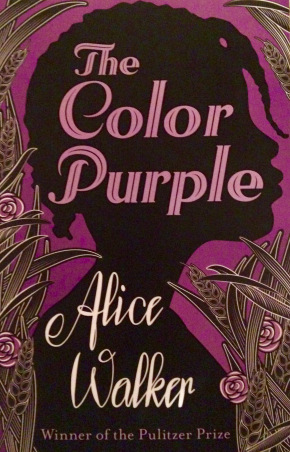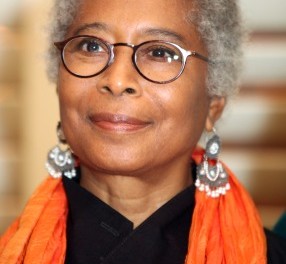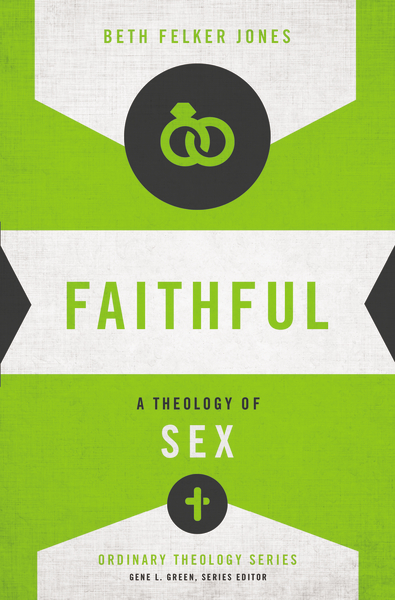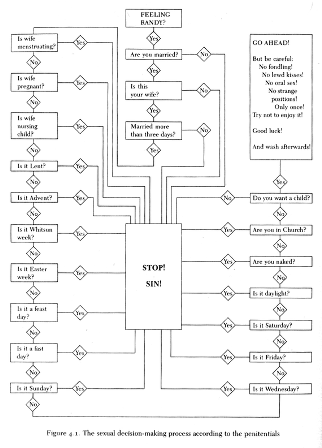 Well, that is probably an overstatement based in ignorance: there are undoubtedly many great books I have never read! Nevertheless, about a year ago I started listening consistently to audio books when cycling or doing the housework and so on. Usually I listen to novels, especially since I do not have much time to read novels anymore. A little while back I listened to Alice Walker’s The Color Purple, and then listened to it again.
Well, that is probably an overstatement based in ignorance: there are undoubtedly many great books I have never read! Nevertheless, about a year ago I started listening consistently to audio books when cycling or doing the housework and so on. Usually I listen to novels, especially since I do not have much time to read novels anymore. A little while back I listened to Alice Walker’s The Color Purple, and then listened to it again.
The book is an extraordinary work, harrowing and brutal, devastating in its portrayal of inhumanity, sensitive and tender in its realistic portrayal of the beauty and tragedy of humanity. The audio performance was itself part of the pleasure; read by the author, every nuance and inflection drew me more deeply into an unknown world, as the story implicated and accused me, frightened and outraged me, touching my heart with its pathos and vision. It is both a cry of rage and protest against the injustice and inhumanity we humans inflict on one another, and a stubborn affirmation of hope in the midst of suffering, of endurance against all odds, of a kind of triumph in the end as we become more and more who we truly are.
Yet this becoming is neither easy nor automatic. Virtues grow slowly and under great pressure, and it is these that sustain a great and ordinary life. Walker does not idolise suffering, excuse injustice, or laud poverty. Nor is she ‘politically correct.’ Her major character, Celie, emerges into freedom only with great difficulty, slowly becoming the character and finding the community by which she becomes who she is.
(I wonder if Stanley Hauerwas has written on this story? I must see what I can find.)
The Color Purple is a deeply spiritual, deeply theological book, though the theology conveyed is neither biblical nor orthodox. In a preface to a newer, British edition Walker reflects,
Twenty-five-years later, it still puzzles me that The Color Purple is so infrequently discussed as a book about God. About ‘God’ versus ‘the God image’. After all, the protagonist Celie’s first words are ‘Dear God’. Everything that happens during her life, spanning decades, is in relation to her growth in understanding this force. I remember attempting to explain the necessity of her trials and tribulations to a skeptical fan. We grow in our understanding of what ‘God/Goddess’ means, and is, by the intensity of our suffering, and what we are able to make of it, I said. As far as I can tell, I added.
The book is an epistolary novel, the drama, characterisation and plot progressing by means of a series of letters written by Celie and her sister, Nettie. Many of the letters, especially in the earlier sections of the book begin simply, ‘Dear God.’ The final letter of the book begins, ‘Dear God. Dear stars, dear trees, dear sky, dear peoples. Dear everything. Dear God.…’ Walker clearly holds a pantheistic, or at least panentheistic, view of God in which the divine is deeply immanent within everything, a faithful creator and life-giving, life-affirming Spirit. She revolts against the intellectual idolatry that reduces God to the white, to the male, to the human. From the perspective of Christian orthodoxy, her rejection of Jesus Christ as attested in Scripture as the revelation of God is deeply troubling. From the perspective of the lived history of her family and people, it is hardly surprising.
There is much in this critique that Christian orthodoxy could listen to and learn from. Walker’s vision of the grace given in the order of creation is deeply moving and inspiring. Her understanding of the sinfulness of humanity is also particularly acute—at least to a degree. Where she departs from Christian orthodoxy is in limiting God to the order of creation. Hers is a religion of nature, and ‘redemption’ a reconciliation of the human spirit with this universal and universally-available reality.
There is a prequel of sorts to this story. Back in the very early 90s I rented the movie from the local video store. I didn’t last long: the opening rape scene was an affront, the lesbian encounter part way through not to be borne. I mentioned the movie in a sermon not too long after that, telling how I had turned it off. A woman in the congregation came up to me afterwards, surprised at my reaction to the film, and describing it as one of the most meaningful movies she had ever seen. Fortunately I could accept that what was difficult for one person was not necessarily the same for another (“for whatsoever is not of faith is sin”—Romans 14:23).
In hindsight, I think I see things more clearly. She was a woman; I, male. She was in her forties with more life experience and maturity, as well as more suffering and difficulty. I was barely thirty, if that, and with a much more ‘moral’ understanding of God. My own sexual brokenness and vulnerability played a large role in my reaction, as did the very black-and-white biblical hermeneutic I had in those days. It is possible the movie did not do justice to the story. But no matter how faithful or otherwise Spielberg was in his adaption of the book to the screen, it is more likely that I did not have either the life-maturity, spiritual maturity or theological maturity to hear, let alone penetrate, its message.
Twenty-five years later I am deeply touched and humbled by this story. Good literature does that: it holds up a mirror to ourselves, opening the soul to deeper understanding of itself, life, the world, and sometimes, God. Good literature probes, accuses, interrogates, and questions. And it does it in such a winsome and alluring fashion, we hardly notice it occurring. Alice Walker won the Pulitzer Prize for her novel, and with good reason. This is a book to savour. I will read it for myself as time allows. I will also listen to it again, just to hear Alice Walker read me back into this world at once so alien and so presently real.







 In this context, then, the positive marital-sexual vision of verses 15-20 is set forth. Here the language is that of abundance, of a well-watered garden—a very rich and evocative image in a desert landscape. Not simply evocative, the language is overtly erotic, “wells” and “fountains” imaging the female and the male sexual partners. It seems likely that the partners have been married for some time since the passage refers to the husband’s wife as “the wife of your youth” (v. 18; Cf. Ecclesiastes 9:9). As already noted, the addressee of the passage is especially the man, who is admonished to be satisfied in her love, with her breasts, to view her in terms of the grace and vigour of a doe. He is to drink water from his own cistern—not that of others—and likewise, keep his streams “out of the streets.” He is to rejoice in his wife, and she evidently, in her husband. Their congress is a joyful meeting, unrestrained and, one hopes, mutually exhilarating. She remains the only object of his sexual desire through the years, the only well from which he draws water, the only guest to visit his fountain.
In this context, then, the positive marital-sexual vision of verses 15-20 is set forth. Here the language is that of abundance, of a well-watered garden—a very rich and evocative image in a desert landscape. Not simply evocative, the language is overtly erotic, “wells” and “fountains” imaging the female and the male sexual partners. It seems likely that the partners have been married for some time since the passage refers to the husband’s wife as “the wife of your youth” (v. 18; Cf. Ecclesiastes 9:9). As already noted, the addressee of the passage is especially the man, who is admonished to be satisfied in her love, with her breasts, to view her in terms of the grace and vigour of a doe. He is to drink water from his own cistern—not that of others—and likewise, keep his streams “out of the streets.” He is to rejoice in his wife, and she evidently, in her husband. Their congress is a joyful meeting, unrestrained and, one hopes, mutually exhilarating. She remains the only object of his sexual desire through the years, the only well from which he draws water, the only guest to visit his fountain.
